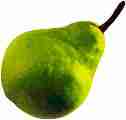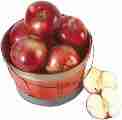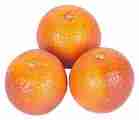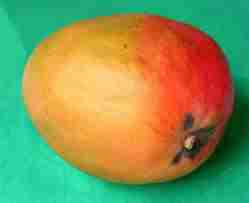The fruits and The English greetings.
Whether you are in the supermarket trying to find your favourite fruit or whether you want to talk about what fruits you like or dislike, you will need to know the names of fruits in the English language. There are many different fruit names to learn but this doesn’t mean that it is an impossible task, by learning a few at a time you will soon be able to name any fruit in English!
Fruits Names:
Fruit or a fruit is something which grows on a tree or bush and which contains seeds or a stone covered by a substance that you can eat.
List of Fruits
- Apple
- Watermelon
- Orange
- Pear
- Cherry
- Strawberry
- Nectarine
- Grape
- Mango
- Blueberry
- Pomegranate
- Carambola(U.K) – starfruit (U.S)
- Plum
- Banana
- Raspberry
- Mandarin
- Jackfruit
- Papaya
- Kiwi
- Pineapple
- Lime
- Lemon
- Apricot
- Grapefruit
- Melon
- Coconut
- Avocado
- Peach
Fruit Names with Pictures and Examples
Learn list of fruits illustrated with images and example sentences in English.
Apple
An apple a day keeps the doctor away.
Watermelon
The woman cut up the watermelon and shared it out among the four children.
Orange
He cut the orange into quarters.
Pear
The pear is a delicious fruit and I like it very much.
Cherry
Each cake had a cherry on top.
Strawberry
The strawberry harvest failed because of the drought.
Nectarine
Cut that nectarine into four pieces and then take out the pit.
Grape
He put a grape into his mouth and swallowed it whole.
Mango
That mango tasted divine!
Blueberry
When we got home, my mother decided to make a blueberry pie.
Pomegranate
The pomegranate trees in the yard have borne fruit.
Carambola(U.K) – starfruit (U.S)
We decorated dishes with slices of carambola/ starfruit and kiwi.
Plum
The plum season is about to begin.
Banana
She peeled off the skin of a banana for the child.
Raspberry
For dessert, I dig into the raspberry bread pudding.
Mandarin
Mandarin oranges have a lot of vitamin C.
Jackfruit
Many people like the taste of jackfruit, but it smells terrible.
Papaya
Papaya and pineapple contain enzymes which break down soft protein.
Kiwi
I love to drink kiwi fruit juice.
Pineapple
The pineapple was sweet and juicy.
Lime
Oranges, lemons, limes and grapefruit are types of citrus fruit.
Lemon
We’d better add in some lemon juice before mixing the flour with sugar.
Apricot
The apricot trees are in full blossom.
Grapefruit
Grapefruit can help reduce harmful blood cholesterol levels and cranberry juice relieves cystitis.
Melon
We had melon for lunch at school.
Coconut
Coconut is a basic ingredient for many curries and other Asian dishes.
Avocado
Avocado salad is a favourite of mine.
Peach
The peach trees cast all their blossoms after the heavy rain.
Let’s see a video with the fruits in English. And the correct pronunciation.
Exercise: the fruits.
Click on letters between brackets to build correct words. Click on the box to start again.
1.  This is used to make wine : (
This is used to make wine : (
)
2.  It is the fruit that monkeys like : it is a (
It is the fruit that monkeys like : it is a (
)
3.  It is an autumn fruit : a (
It is an autumn fruit : a (
)
4.  Sometimes its shape looks like a heart : (
Sometimes its shape looks like a heart : (
)
5.  This fruit is delicious : it is a (
This fruit is delicious : it is a (
)
6.  It is an exotic fruit with a beautiful green top : it is a (
It is an exotic fruit with a beautiful green top : it is a (
)
7.  This fruit is used to make lemonade : (
This fruit is used to make lemonade : (
)
8.  This fruit can be red or green : it is an (
This fruit can be red or green : it is an (
)
9.  This fruit gives us vitamin C : it is an (
This fruit gives us vitamin C : it is an (
)
10.
 The juice of this fruit is very sweet and delicious : a (
The juice of this fruit is very sweet and delicious : a (
)
17 Useful English Greetings for English Learners
You probably already know “hello” and “how are you?”
However, English speakers don’t always say “hello” and “how are you?”
They also use many other English greetings and expressions to say slightly different things.
You can also use such English greetings to sound more natural, and also to express yourself more clearly and precisely, even at the beginner English level.
Let’s learn how to use some other simple formal and informal English greetings, as well as fun slang expressions that people around the world use to greet each other.
Common English Greetings and Expressions
English-speaking people usually greet each other in an informal way, so you can use these common conversational greetings for friends, family, as well as people you meet in casual settings.
1. Hey, Hey man, or Hi and Greeting a stranger
You can use “hey” and “hi” to greet someone instead of “hello”. Both are particularly popular among younger people. While “hi” is appropriate to use in any casual situation, “hey” is for people who have already met. If you say “hey” to a stranger, it might be confusing for that person because he or she will try to remember when you met before! You can also add “man” to the end of “hey” when greeting males. Some people also use “hey man” to casually greet younger women, but only do this if you know the woman very well. Remember that “hey” doesn’t always mean “hello”. “Hey” can also be used to call for someone’s attention.
But what about introducing yourself to a stranger? Speaking with strangers is often a dreaded (feared) task for many speaking in a second language and for English learners, it is no different. We have particular titles used for greeting strangers in English and usually, it is more formal speech than hey, hey man or hi.
2. How’s it going? or How are you doing?
These are casual ways of asking “how are you?” If you’re trying to be particularly polite, stick with “how are you?” but otherwise, you can use these expressions to greet almost anyone. The word “going” is usually shortened, so it sounds more like “go-in”. You can answer with “it’s going well” or “I’m doing well” depending on the question. Although it’s not grammatically correct, most people just answer “good” – and you can too. Like when responding to “how are you?” you can also follow your answer by asking “and you?”.
3. What’s up?, What’s new?, or What’s going on?
These are some other informal ways of asking “how are you?” which are typically used to casually greet someone you have met before. Most people answer with “nothing” or “not much”. Or, if it feels right to make small talk, you could also briefly describe anything new or interesting that’s going on in your life, before asking “what about you?” to continue the conversation.
4. How’s everything ?, How are things?, or How’s life?
These are some other common ways of asking “how are you?” They can be used to casually greet anyone, but most often they’re used to greet someone you already know. To these, you can answer “good” or “not bad”. Again, if small talk feels appropriate, you could also briefly share any interesting news about your life, and then ask the person “what about you?” or another greeting question.
5. How’s your day? or How’s your day going?
These questions mean “how are you?” not just right now, but how you’ve been all day. You would use these greetings later in the day and with someone you see regularly. For example, you might ask a co-worker one of these questions in the afternoon, or a cashier that you see at the grocery store every evening. “It’s going well” is the grammatically correct response, but many people simply answer with “fine”, “good” or “alright”. By the way, notice that “good”, “fine” or “not bad” are perfect answers to almost any greeting question.
6. Good to see you or Nice to see you
These casual greetings are used with friends, co-workers or family members that you haven’t seen in a while. It’s common for close friends to hug when they greet each other, particularly if they haven’t seen each other in some time; so you might use this greeting along with a hug or handshake depending on your relationship with the person.
7. Long time no see or It’s been a while
These casual greetings are used when you haven’t seen someone in a long time, particularly if you meet that person unexpectedly. How much is along time? It depends on how often you normally see that person. For example, you could use one of these greetings if you normally see the person every week, but then don’t see them for a few months or more. Usually, these English phrases are followed with a question like “how are you”, “how have you been?” or “what’s new?”.
1- Formal Grettings:
1-
8. Good morning, Good afternoon, or Good evening
These are formal ways of saying “hello”, which change depending on the time of day. Keep in mind that “good night” is only used to say “good bye”, so if you meet someone late in the day, remember to greet them with “good evening”, rather than “good night”. Good morning can be made more casual by simply saying “morning”. You can also use “afternoon” or “evening” as informal greetings, but these are less commonly used.
9. It’s nice to meet you or Pleased to meet you
These greetings are formal and polite. If you say this to someone when you meet him or her for the first time, it will make you seem courteous. Remember to only use these greetings the first time you meet someone. Next time you see the person you can show that you remember him or her by saying “it’s nice to see you again”.
10. How have you been?
This greeting question is only asked by people who have already met. If someone asks you “how have you been?” they want to know if you have been well since the last time the two of you met.
11. How do you do?
This greeting is VERY formal, and quite uncommon, but it may still be used by some older people. The proper response is “I’m doing well” or, as strange as it seems, some people even ask “how do you do?” right back as an answer.
Slang English Greetings
Slang greetings are extremely informal, and should only be used with people that you know very well, and feel very comfortable with. Keep in mind that a lot of slang is regional, and using Australian slang, for example, in America can sound quite strange. You’ll need to learn the local slang wherever you are, but these common examples will help you get started.
12. Yo!
This extremely informal greeting is common in America. It comes from 1990’s hip-hop slang and these days it’s often used jokingly. This greeting should only be used with very close friends, and never in a business setting.
13. Are you OK?, You alright?, or Alright mate?
This casual way of asking both “hello” and “how are you” is common in Britain. You can respond “yeah, fine”, or simply “alright”.
14. Howdy!
This is a very informal abbreviation of “how do you do?” that is common in certain parts of Canada and the U.S. Keep in mind that if you say “howdy” outside of these regions, you will sound like a cowboy, and it might make the other person laugh.
15. Sup? or Whazzup?
These greetings are abbreviations of “what’s up?” which are common among teenagers. Like with “what’s up?” you can answer “nothing” or “not much”.
16. G’day mate!
This casual greeting is an Australian abbreviation of “good day”. Keep in mind that Australian greetings often use “ya” instead of “you”. So “how are ya?” is the same as “how are you?”, and “how are ya going?” is basically the same as “how’s it going?” or “how are you doing?”
17. Hiya!
This greeting, short for “how are you?”, is commonly used in certain parts of England. However, you don’t need to actually answer this question – you can just say “hey!” right back.
I hope you enjoy trying out these new English greetings. You’ll find that greeting people in different ways will help your English sound more natural, and it might even make English greetings more fun and interesting for you.
2- Exersice.- Geettings:
Make one sentence or example with each one of the English greetings.
3- Let’s see a video of the English greetings and the pronunciation.






























Comentarios
Publicar un comentario